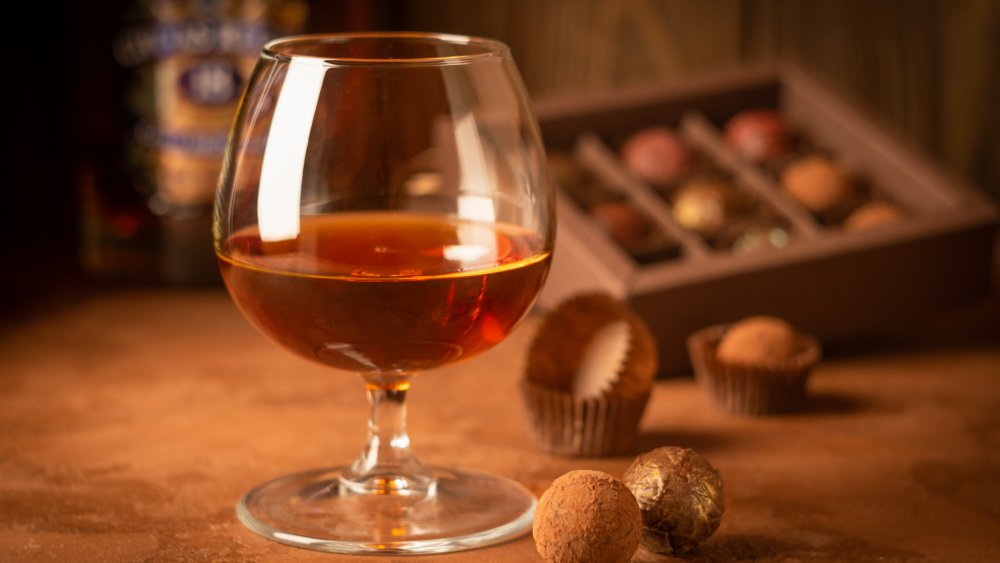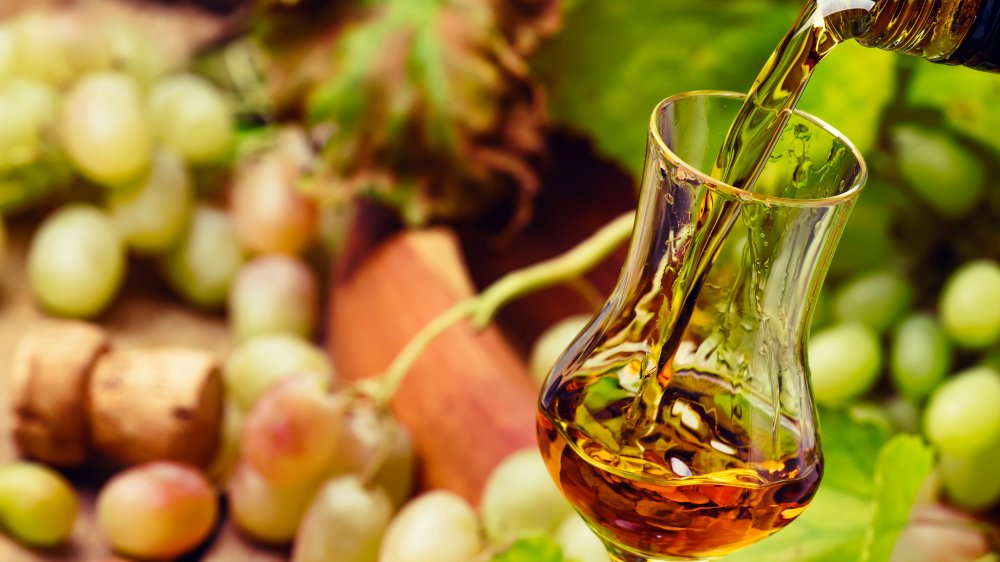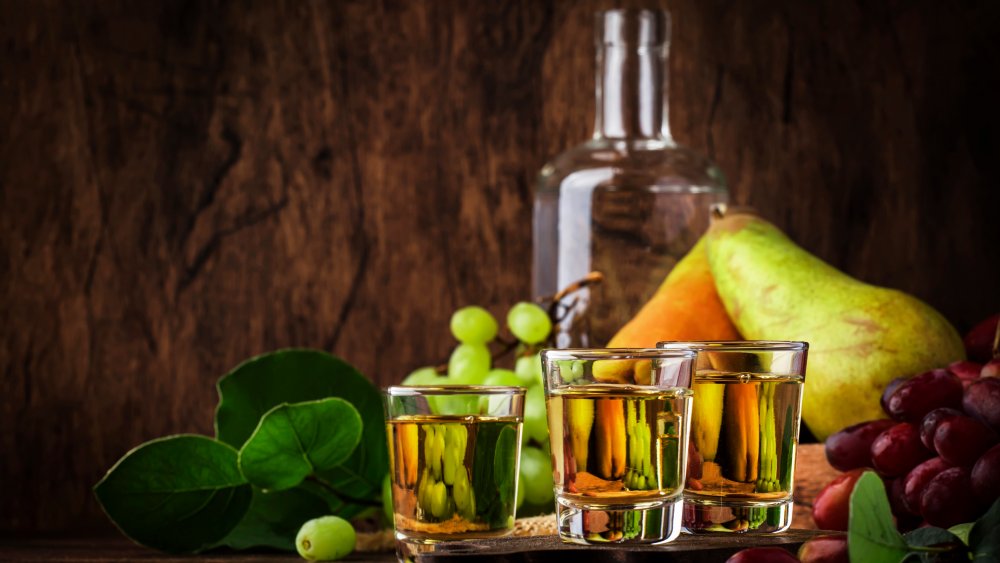This Is What Brandy Is Really Made From
For some insight into the origins of brandy, look no further than the etymology of the word itself: It evolved from the Dutch word brandewijn, which means "burned wine," and was possibly born in the 16th century when "a Dutch shipmaster began ... concentrating wine for shipment, intending to add water upon reaching home port," and the resulting alcohol proved a hit (via Encyclopaedia Britannica).
Like wine, the creation of brandy starts with fruit. According to The Spruce Eats, brandy is usually made from grapes, but makers can also harvest other fruits, like apple, peach, and apricot, for its base; at its essence, it's "a distilled spirit produced from fermented fruit juice."
Encyclopaedia Britannica adds that its "burned" designation points to the heat that's added in the distillation process, and many varieties are aged to create a product that's about 50 percent ABV (though brandy added to dessert wines like sherry and Madeira can clock in at 80 to 95 percent).
Grape-based brandies
The Spruce Eats reports that brandy consumption peaks in Brazil, Germany, the Philippines, India, and Russia, but many cultures have created their own varieties of the popular alcohol.
Perhaps Cognac is the most famous type of brandy — and certainly one of the most prestigious, thanks to a rigorous selection of grapes confined to the south of France (the Cognac region), plus a two-year-minimum aging process in French oak (via Town & Country). VinePair notes that Armagnac, also named after its home region, has similar stringent requirements but often less alcohol, plus fuller flavor due to its pared-down distillation process.
In the Mediterranean, Greece produces ouzo, known for its anise flavor, and Metaxa, dubbed "a Greek variety of Cognac with an orangey zing" and "the king of Greek liquor" (via Vice). Alternatively, Thirsty notes that Italy's grappa is made not from entire grapes, but remnants left from the winemaking process: skins, seeds, and stems.
Spain, possibly "the first European country to produce brandy," crafts 95 percent of its haul in the Andalucía region, mostly from the Airén grape variety (via Forbes). And Tasting Table points out that pisco is made from fermented grape juice, usually hailing from Chile or Peru.
Fruit-based brandies
Other fruits can form the basis for brandy production, too: France makes calvados from fermented apple cider, a technique also used for U.S.-born applejack; Hungary crafts barack palinka from apricots; Germany and Switzerland tap cherries for Kirschwasser; and France uses raspberries and strawberries, respectively, for framboise and fraise (via Encyclopaedia Britannica). The Manual notes that drinkers in Eastern Europe turn to slivovitz, a plum brandy, which is a type of rakija, a catchall term for "a host of generally unaged brandies made with plums, pears, cherries, or whatever tree fruit is locally available" (via Bar & Restaurant).
Finally, according to The Spruce Eats, there's unaged, colorless fruit brandy seductively called eau-de-vie ("water of life"), which offers up a hint of fruity flavor — it can derive from fruits such as apple, pear, peach, and yellow plum.
Safe to say that with so many choices around the globe, bartenders and amateur mixologists alike can think outside the Sidecar and explore literally an entire world of flavor possibilities under the expansive brandy umbrella.


